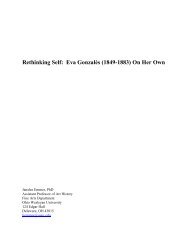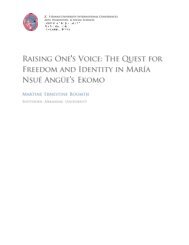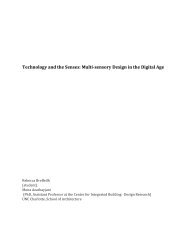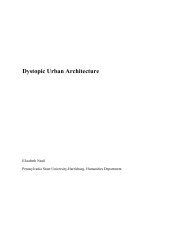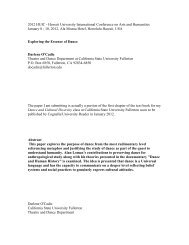Lieder eines armen Mädchens: a Song Cycle for the Cabaret ...
Lieder eines armen Mädchens: a Song Cycle for the Cabaret ...
Lieder eines armen Mädchens: a Song Cycle for the Cabaret ...
Create successful ePaper yourself
Turn your PDF publications into a flip-book with our unique Google optimized e-Paper software.
<strong>Lieder</strong> <strong>eines</strong> <strong>armen</strong> <strong>Mädchens</strong>: A <strong>Song</strong> <strong>Cycle</strong> <strong>for</strong> <strong>the</strong> <strong>Cabaret</strong><br />
Struve 1<br />
It is 1921. A small crowd is ga<strong>the</strong>red in <strong>the</strong> Café Größenwahn. A light shines on a<br />
pale, thin figure standing alone on <strong>the</strong> stage. She is <strong>the</strong> epitome of innocence and frailty;<br />
a victim of circumstance. The music starts, and <strong>the</strong> girl relates her tale of suffering,<br />
<strong>for</strong>gotten and abandoned on <strong>the</strong> streets of Berlin, her voice carrying through <strong>the</strong><br />
audience, but reflecting <strong>the</strong> weakness and tenuousness of her position. A hush falls<br />
through <strong>the</strong> crowd, <strong>the</strong> audience mesmerized by <strong>the</strong> pa<strong>the</strong>tic creature be<strong>for</strong>e <strong>the</strong>m. The<br />
song ends, and <strong>the</strong>re is silence, <strong>the</strong> spectators collectively attempting to comprehend<br />
what <strong>the</strong>y have witnessed. And <strong>the</strong>n – applause.<br />
From <strong>the</strong> very first per<strong>for</strong>mance of Friedrich Hollaender’s <strong>Lieder</strong> <strong>eines</strong> <strong>armen</strong><br />
<strong>Mädchens</strong>, <strong>the</strong> music, text, and <strong>the</strong> characterization of per<strong>for</strong>mer Blandine Ebinger<br />
captivated audiences. Throughout <strong>the</strong> 1920s, songs from this set would be featured<br />
frequently in cabarets and o<strong>the</strong>r per<strong>for</strong>mance venues, and <strong>the</strong> character of Lieschen<br />
Puderbach, <strong>the</strong> subject of <strong>the</strong> songs, became one of Ebinger’s signature roles. An<br />
examination of <strong>the</strong> text, music, and per<strong>for</strong>mance practice surrounding this set will<br />
demonstrate <strong>the</strong> significance of <strong>the</strong>se songs as examples of music emerging from <strong>the</strong><br />
Weimar Republic cabaret scene in <strong>the</strong> 1920s. 1<br />
Almost from birth, Friedrich Hollaender, <strong>the</strong> author and composer of <strong>Lieder</strong> <strong>eines</strong><br />
<strong>armen</strong> <strong>Mädchens</strong> seemed destined <strong>for</strong> a career in music and entertainment. His parents<br />
were composer Victor Hollaender and singer/entertainer Rosa Perle, who both worked<br />
at <strong>the</strong> Barnum and Bailey circus in London when Friedrich was born. They recognized<br />
1 Kühn, Volker. Die Zehnte Muse. Köln: VGS, 1993: 63.



